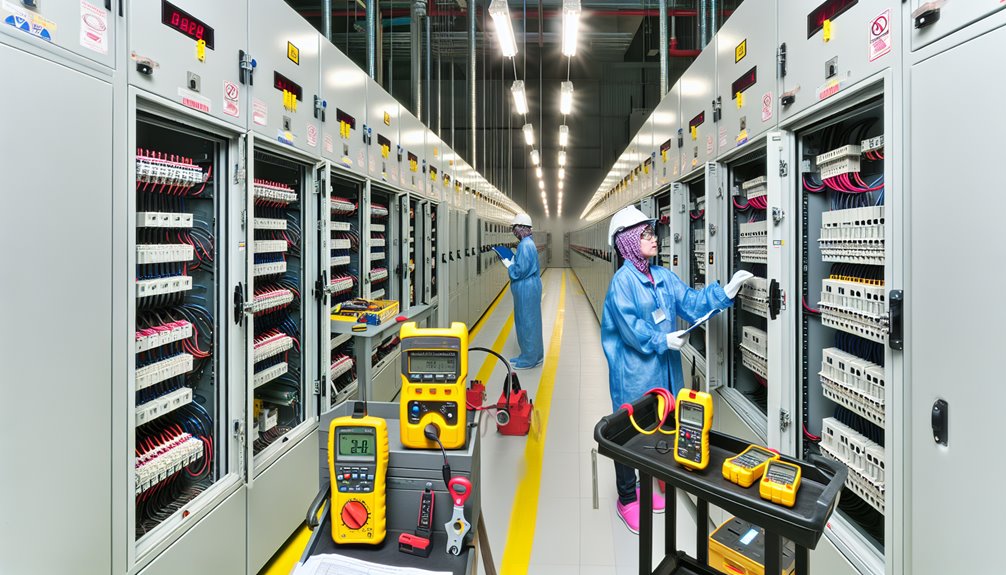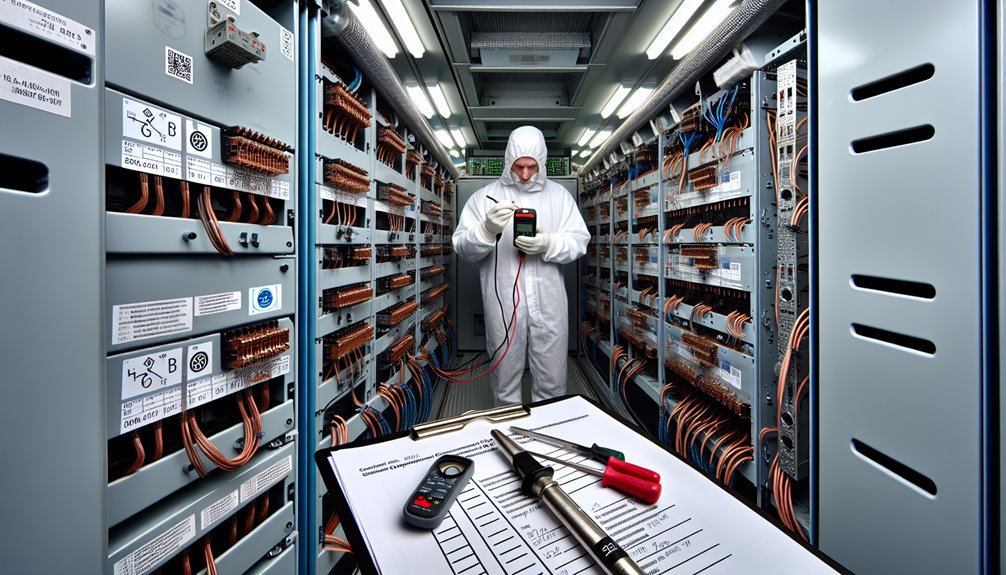Low voltage switchgear standards define safety, design, performance, and testing for assemblies up to 1,000 V AC or 1,500 V DC. Core frameworks include IEC 61439, UL 1558/ANSI C37 series, and China’s GB 7251. They mandate dielectric strength, short-circuit withstand, temperature rise, clearances, and documented verification. Compliance demands certified testing, QA plans, and audits. OEMs like Conya align with IEC/UL/GB, leveraging partners for arc mitigation and diagnostics. Benefits include reliability, energy efficiency, and faster approvals, with practical guidance outlined next.

Low voltage switchgear standards are a set of internationally recognized guidelines that define how switchgear assemblies should be designed, constructed, tested, and maintained. These standards exist to ensure that electrical systems operate safely, reliably, and efficiently, even under demanding conditions.
At their core, these standards specify requirements for:
Because electrical infrastructure varies around the world, different regions follow different governing bodies. For example, IEC standards are widely adopted internationally, UL and ANSI/IEEE standards dominate in the United States, and GB standards apply in China. Together, they form a global framework that ensures consistent quality and reliability across markets.
For manufacturers, complying with these standards is not optional—it’s a requirement to enter certain markets. For buyers and project managers, knowledge of these standards helps in selecting equipment that meets local regulations and reduces long-term operational risks.
Because electrical systems must operate safely and reliably across different industries and geographies, several organizations have developed standards for low voltage switchgear. These standards vary slightly by region but share the same purpose: to establish clear requirements for design, performance, safety, and testing.
The International Electrotechnical Commission (IEC) publishes the most widely recognized global standards for low voltage switchgear.
1. IEC 61439: The current primary standard for low-voltage switchgear and controlgear assemblies. It replaced IEC 60439 and focuses heavily on design verification, type testing, and manufacturer responsibilities.
2. IEC 60439: The older standard, still referenced in some markets, but largely phased out by IEC 61439.
3. Other IEC standards:
These standards ensure consistency in switchgear design and safety worldwide, making IEC compliance a baseline requirement for international projects.
In the United States, standards are primarily set by ANSI/IEEE and UL (Underwriters Laboratories):
These standards give buyers confidence that switchgear installed in the U.S. will meet rigorous safety and reliability benchmarks.
China has its own set of GB (Guobiao, or National) standards, which align with global best practices while addressing local market needs:
Compliance with GB standards is essential for projects within China and for foreign manufacturers seeking to supply to the Chinese market.
By understanding these regional differences, buyers and manufacturers can ensure that low voltage switchgear is certified, compliant, and ready for safe use in their target markets.

While international and regional standards differ in scope, they all focus on similar technical performance and safety requirements. These considerations are critical for ensuring that switchgear performs reliably under normal and fault conditions.
Standards specify the maximum operating voltage and current ratings for switchgear assemblies. This ensures that equipment is properly matched to the electrical system it supports and prevents overloading.
Switchgear must withstand high fault currents without catastrophic failure. Standards define short-circuit ratings and testing methods to ensure that equipment can safely clear faults without damaging other components in the system.
Proper insulation is critical for safe operation. Standards establish minimum insulation withstand voltages to prevent breakdowns and electrical hazards during both normal operation and fault conditions.
Switchgear generates heat during operation. Standards specify temperature rise limits for conductors, busbars, and enclosures to prevent overheating and extend equipment lifespan.
Each standard includes detailed testing requirements—such as dielectric tests, thermal stability tests, mechanical endurance tests, and arc-fault simulations—to verify compliance and ensure consistent quality.
Standards also govern the physical design of switchgear, including barriers, compartments, grounding systems, and accessibility. Proper construction minimizes the risk of accidental contact, improves safety, and simplifies maintenance.
By meeting these technical requirements, low voltage switchgear assemblies not only comply with global standards but also deliver long-term reliability and safety, reducing operational risks for industrial and commercial projects.

If you are sourcing low voltage switchgear for your project, ensuring compliance with international and local standards is one of the most important steps you can take. Choosing equipment that meets these requirements not only protects your investment but also helps you avoid safety risks, legal issues, and costly delays.
By checking these compliance requirements before you buy, you can be confident that your electrical systems will be safe, reliable, and fully approved for use in your region.
Investing in switchgear that complies with recognized standards offers far more than just a certificate—it provides peace of mind and long-term value. By choosing compliant assemblies, you benefit from:
These advantages make standards compliance not just a legal necessity, but also a smart business decision.

At Conya, compliance and safety are built into every switchgear we deliver. Our assemblies meet UL 1558/891, IEC 61439, and GB/T standards, backed by ISO quality management and CCC certification.
We partner with ABB, Eaton, and AEG to integrate advanced protection, arc mitigation, and digital diagnostics, keeping your systems safe and future-ready.
Since 1988, Conya has provided customized solutions across power, industry, transportation, and renewable energy, with engineering support and lifecycle maintenance you can rely on.
With Conya, you get:
Ensure your next project is powered by compliant, reliable switchgear. Contact Conya today!
Standards define inspection frequencies and performance benchmarks, shaping service intervals and long-term maintenance contracts. They enhance maintenance efficiency, support data-driven contract negotiations, improve service reliability, optimize cost management, and extend equipment lifespan through prescribed testing protocols, documentation rigor, competency requirements, and measurable Key Performance Indicators.
Recommended credentials include certification programs like NFPA 70E/OSHA electrical safety, manufacturer-authorized training workshops, arc-flash safety protocols, thermography Level I/II, lockout/tagout, energized work permits, with periodic skill assessments and industry qualifications (IEC/IEEE competency modules) to validate diagnostics, commissioning, and predictive maintenance proficiency.
Standards skew premium calculations and coverage limits by quantifying insurance risk and liability exposure. Picture actuaries dancing with clipboards. Compliance requirements lower frequency-severity assumptions, reduce deductibles, and release endorsements; nonconformance inflates rates, exclusions, and reserves, constraining capacity while signaling governance maturity to innovative underwriters.
They should retain an audit checklist, product lifecycle documentation, compliance records, maintenance logs, inspection reports, commissioning certificates, change-control records, calibration data, firmware revision history, corrective actions, vendor bulletins, training certifications, decommissioning evidence, and traceable asset registers to enable defensible, data-driven audits across lifecycle.
Standards dictate retrofit technologies selection, driving safety upgrades, performance assessments, and lifecycle validation. They shape compliance challenges and cost implications, prioritize certified components, enforce testing protocols, and define interoperability, ultimately guiding risk-reduction strategies, modernization roadmaps, and investment timing for aging electrical infrastructure.